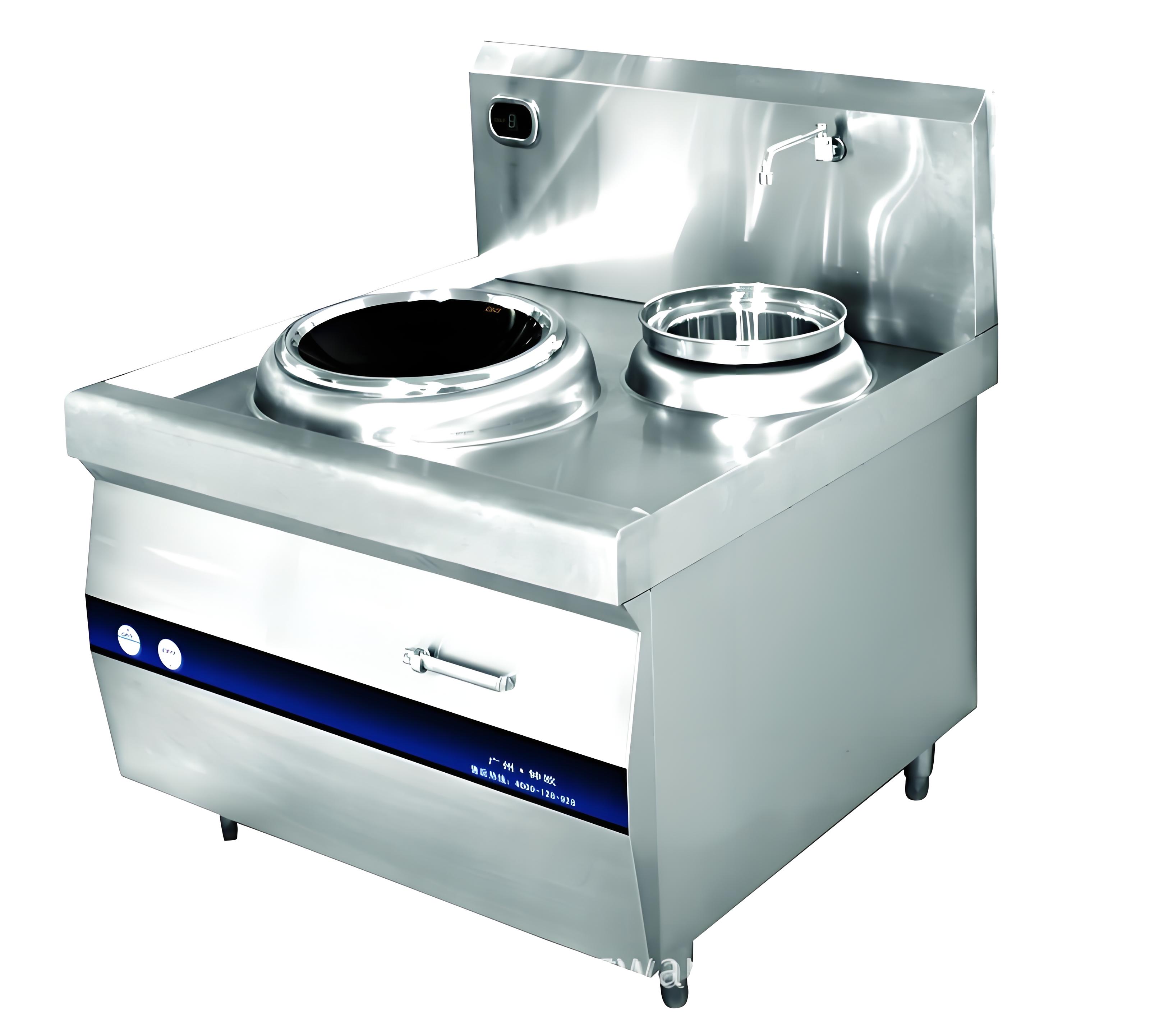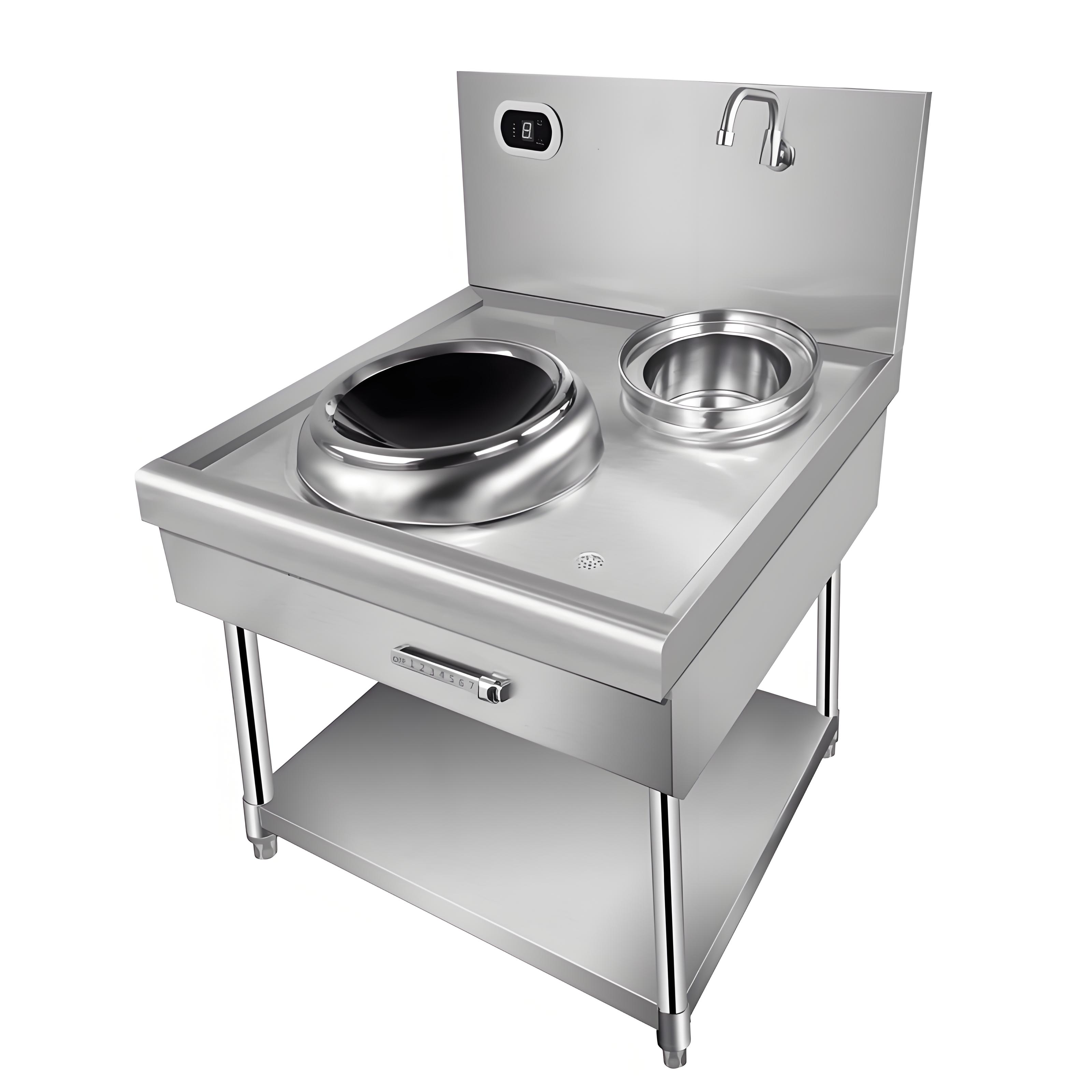In recent years, high-power induction cookers have quickly become an integral part of chefs’ work and daily life. With advantages such as energy efficiency, environmental friendliness, safety and comfort, no open flames, benefits to chefs’ health, rapid heating, and quick cooking, they have rapidly spread across various commercial sectors. These include kitchens in factories, schools, the military, hotels, restaurants, enterprises, trains, and ships. They are especially suitable for all commercial kitchens where open flames are restricted, such as basements, underground malls, railway vehicles, gas stations, and aviation. In many industries, they have even been praised as “green stoves” and “gods of cooking.”

1. After receiving the product, please check the accessories inside the package, which include a faucet, a 1/2 inch water inlet hose, and the user manual. The user manual is extremely important—please be sure to read it carefully before use.
2. It is strictly forbidden to dry-heat an empty pot. High-power induction cookers heat up very quickly, which may damage both the pot and the cooker.
3. When the pot is removed from the ceramic glass panel, do not touch the panel immediately to avoid burns from residual heat.
4. The bottom of the induction cooker is the air intake. Keep it clean and free from obstructions to prevent debris from being sucked in.
5. Before using the induction cooker, make sure there is a pot on it before turning on the main power switch.
6. During operation, do not apply excessive force when turning the handle to avoid damaging the switch. This refers to the rotary knob switch.

7. Do not frequently cut off the power supply during use (except in case of power outages), to avoid damaging the machine’s power system. When shutting off power, ensure the induction cooker has stopped operating and the cooling fan has completely stopped before switching off the main power.
8. To better display the current operating status, do not cover the display screen, and clean off any oil stains or water spots promptly.
9. The ceramic glass is fragile. Avoid sharp impacts or strong vibrations.
10. If the ceramic glass breaks during use, stop using the cooker immediately to prevent potential electric shock, and promptly contact the manufacturer for handling.
11. Do not use stockpots that are not provided or approved by the manufacturer, or stockpots with severely deformed bottoms, as these may damage the ceramic glass or the main unit.
12. Never spray water at the cooling fan or the bottom air return vent while the fan is operating.
13. Regularly clean the air inlet filter to maintain cooling performance. There is an additional grease filter under the high-power induction cooker to prevent the cooling fan from sucking in grease, which should be cleaned frequently.

14. Cleaning of high-power commercial induction cookers should be done only after turning off the power. It is strictly prohibited to wash with water or use steam cleaners or similar methods.
15. Metal items such as kitchen utensils, lids, knives, and forks must not be placed on the cooking area of the stove when it is in operation.
16. When operating the induction cooker, pay attention to wearing metal accessories. Rings, watches, and similar items may be affected by electromagnetic heating if they come too close to the cooking surface (it is recommended to maintain a distance of 30 cm when the high-power induction cooker is working).





